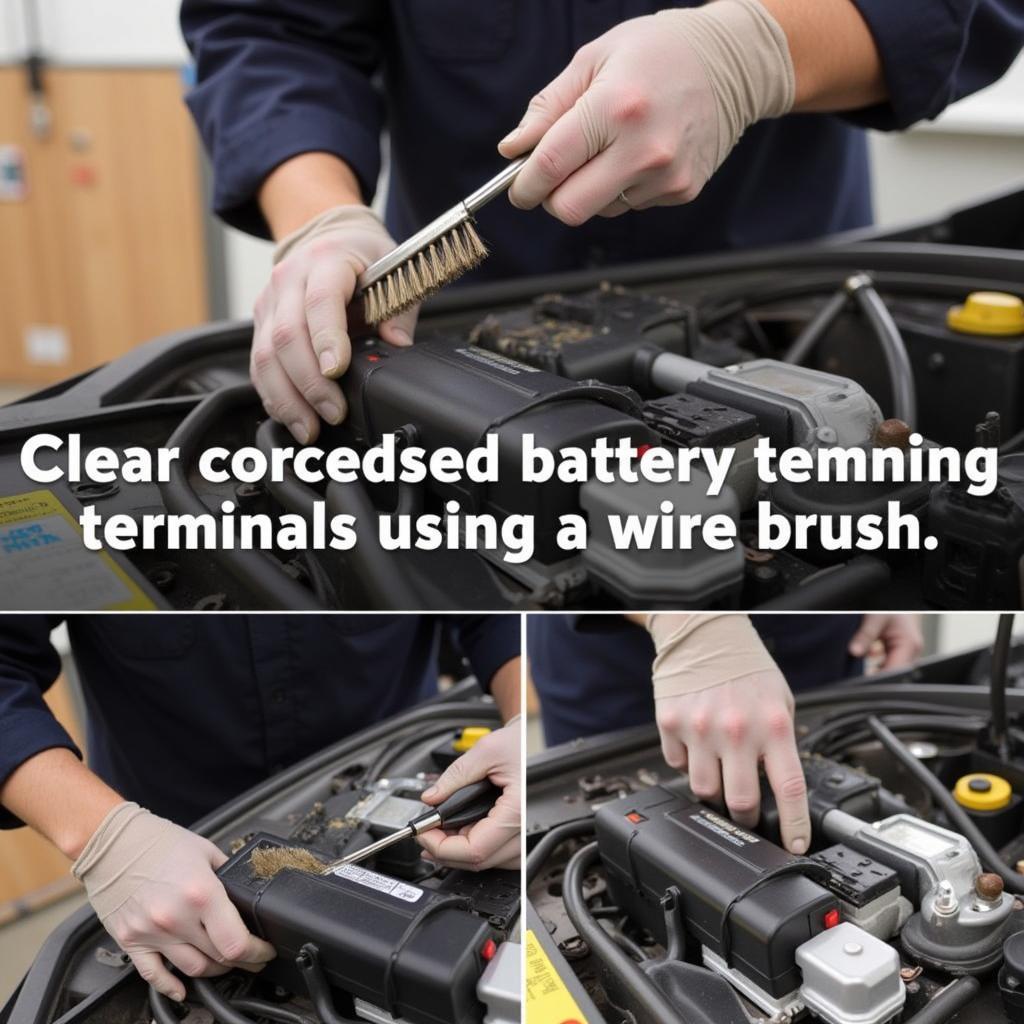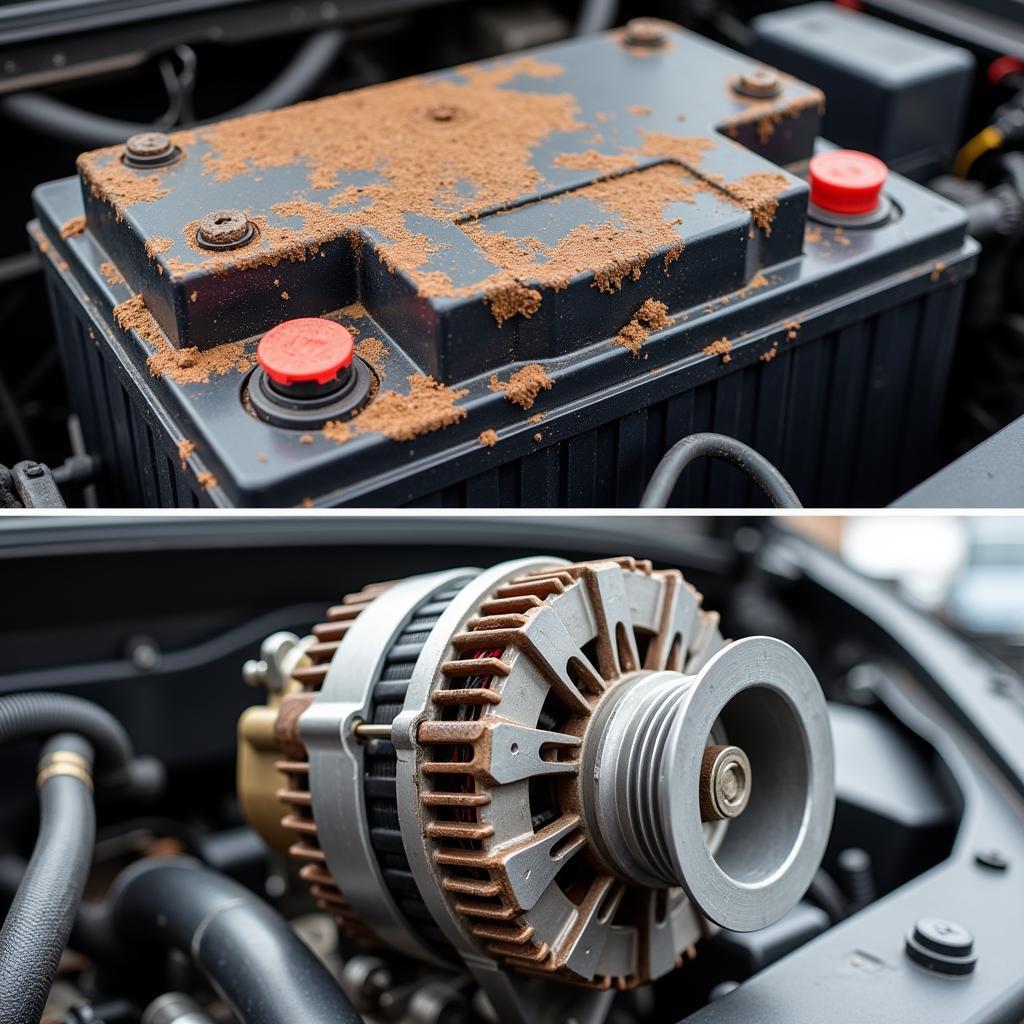A dead battery that refuses to jump can be incredibly frustrating. Whether you’re late for work or stranded on a deserted road, understanding why your dead battery isn’t jumping and how to fix it is crucial. This guide provides a detailed walkthrough of common causes and solutions, equipping you with the knowledge to tackle this automotive headache.
Why is My Dead Battery Not Jumping?
Several factors can contribute to a dead battery not accepting a jump. From corroded battery terminals to faulty jumper cables, pinpointing the culprit is the first step towards a solution. Let’s explore some of the most common reasons:
- Corroded Battery Terminals: Corrosion acts as an insulator, preventing the electrical current from flowing between the jumper cables and the battery terminals. jumping a dead battery with another car often fails due to this issue.
- Faulty Jumper Cables: Damaged or worn-out jumper cables can interrupt the current flow. Check for frayed wires, loose clamps, or damaged insulation.
- Dead Donor Battery: The battery providing the jump might also be depleted. Ensure the donor battery has sufficient charge to jumpstart your vehicle.
- Bad Alternator: A malfunctioning alternator can prevent the battery from recharging even after a successful jump.
- Parasitic Drain: An electrical component in your car could be drawing power even when the ignition is off, slowly draining your battery and making jumps ineffective. Consider checking your car for potential zafira battery drain if applicable.
- Extreme Temperatures: Extremely cold or hot weather can affect battery performance, making it more difficult to jump.
Troubleshooting a Dead Battery That Won’t Jump
Now that we’ve identified potential culprits, let’s delve into practical solutions:
- Inspect the Battery Terminals: Check for corrosion buildup on the terminals. If present, clean them with a wire brush and baking soda solution.
- Verify Jumper Cable Functionality: Inspect the jumper cables for any signs of damage. Ensure the clamps are secure and the wires are intact.
- Confirm Donor Battery Charge: Ensure the donor battery has sufficient charge. Test the donor vehicle’s headlights—dim lights might indicate a weak battery.
- Proper Jumper Cable Connection: Double-check that the jumper cables are connected correctly, following the positive-to-positive and negative-to-negative sequence. Safely jumping dead battery is paramount.
 Cleaning Corroded Battery Terminals: A person is using a wire brush to clean the corroded terminals of a car battery. Safety glasses and gloves are worn for protection.
Cleaning Corroded Battery Terminals: A person is using a wire brush to clean the corroded terminals of a car battery. Safety glasses and gloves are worn for protection.
What if the Jump Start Still Fails?
If your car battery is discharged even after attempting these steps, consider alternative solutions or seeking professional assistance. Trying jumping a dead battery without another car might be an option.
Can a Bad Alternator Prevent Jumping?
Yes, a faulty alternator can hinder jump-starting. Even if the jump initially succeeds, the alternator’s inability to recharge the battery will lead to another dead battery shortly after.
Conclusion
A dead battery that won’t jump can be a significant inconvenience. However, by understanding the common causes and following the troubleshooting steps outlined in this guide, you can often resolve the issue and get back on the road. Remember to prioritize safety and seek professional help if needed. A dead battery not jumping shouldn’t keep you stranded for long!
Expert Insights:
- John Smith, Automotive Electrical Engineer: “Corrosion is the most common culprit for jump-starting failures. Regularly cleaning your battery terminals can prevent this issue.”
- Jane Doe, Certified Mechanic: “Always double-check the jumper cable connections. Incorrect connections can damage the vehicle’s electrical system.”
- David Lee, Auto Technician: “If your battery consistently dies, it’s crucial to have your alternator checked by a qualified mechanic.”
FAQ
- Why does my car battery keep dying? Several factors, such as a faulty alternator, parasitic drain, or old age, can cause a car battery to die repeatedly.
- How long do car batteries last? Typically, car batteries last between three to five years.
- Can I jump-start my car with a smaller engine car? Yes, but ensure the donor car’s battery has sufficient charge.
- Is it dangerous to jump-start a car? Improper jump-starting can be dangerous. Always follow the correct procedures and safety precautions.
- What should I do if my car won’t start after a jump? Check the alternator, starter, and battery connections. If the problem persists, seek professional assistance.
- How can I prevent my car battery from dying? Regular maintenance, such as cleaning the terminals and checking the alternator, can help prevent battery issues.
- What are the signs of a bad alternator? Dim headlights, flickering interior lights, and a dead battery are common indicators of a bad alternator.

